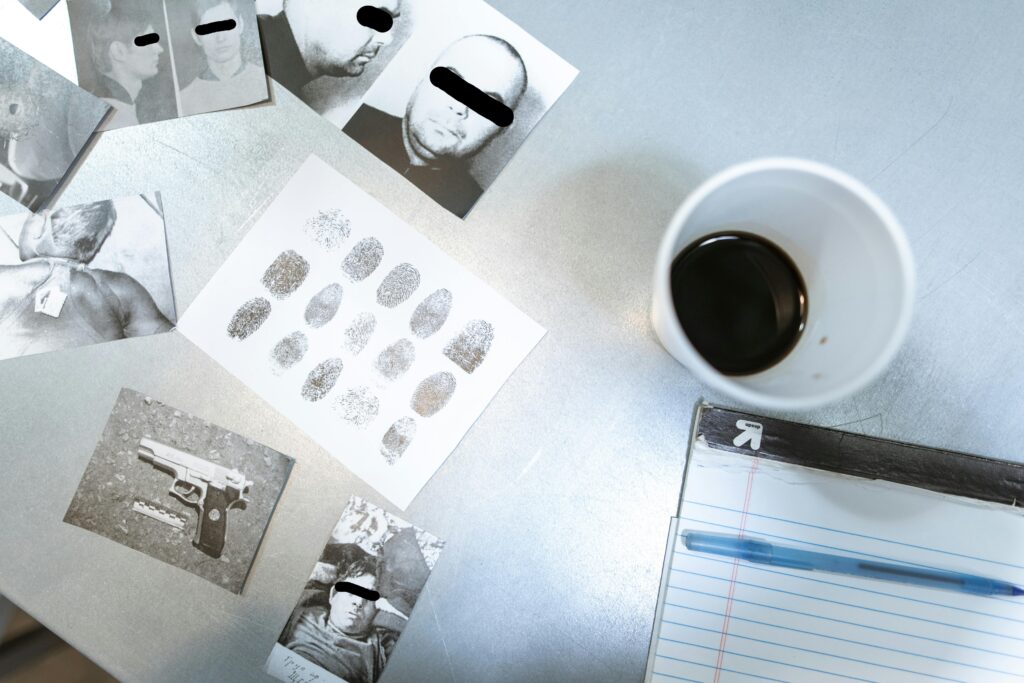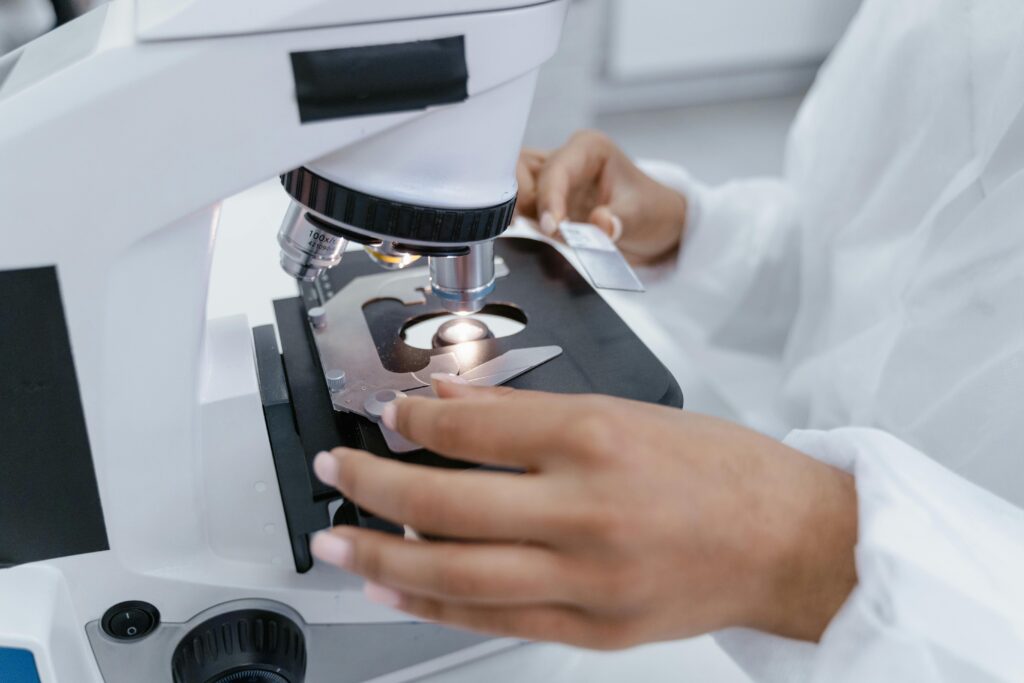DNA Profiling: An Accidental Breakthrough

In 1984, a serendipitous moment in a British laboratory forever changed the landscape of forensic science. While tracking inherited diseases, geneticist Sir Alec Jeffreys at the University of Leicester made a groundbreaking discovery: DNA strands are unique enough to be accurately linked to their owners. This revelation laid the foundation for DNA profiling as we know it today.
Jeffreys and his team extracted DNA from cells and used photographic film to develop them into pictures. What they saw was a pattern—a fuzzy, splodgy mess that turned out to be a DNA fingerprint. “We got a pattern like a fuzzy bar code. Jeffreys recalled, “That was a real eureka moment because we were suddenly onto something completely new—DNA-based identification. The patterns were individual-specific and appeared to be inherited within the family.”
The First Applications of DNA Profiling

The potential of DNA profiling was soon put to the test. In 1985, Jeffreys provided scientific evidence for an immigration dispute by matching a boy to his biological parents through DNA, allowing him British citizenship. Until 1987, Jeffreys’ lab was the only one in the country providing this sort of testing for civil cases.
The first criminal case to use DNA evidence was the 1986. The double rape and murder of teenagers Lynda Mann and Dawn Ashworth, just five miles southeast of Jeffreys’ University. Both teenagers were raped and murdered in very similar ways, even though these crimes were 2 1/2 years apart. Jeffreys’ team managed to prove that the DNA of the perpetrator at both crime scenes came from the same person. They also proved that the suspect they currently had in custody, 17-year-old Richard Buckland, was not the perpetrator.
Investigators arrested Colin Pitchfork in 1987. A man confessed that, as a favour, he had pretended to be his colleague for the DNA testing. When the police got wind of this, they called Pitchfork in for questioning; he confessed to the crime almost immediately. DNA testing then confirmed him as the perpetrator.
The Rise and Ethical Concerns of DNA Databases
Following this landmark case, investigators and scientists rapidly implemented the novel technique across the country, and the world soon followed. For a while, DNA evidence was only used in very big cases and not very often because it was cumbersome. DNA profiling only became a popular technique when countries began compiling their own national DNA databases. The UK established its national DNA database in 1995, which currently has over 5.9 million registered people.
However, the rise of DNA databases has not been without ethical concerns. In the UK and the US, DNA databases have a significantly higher proportion of people from non-white heritage than in the general population. In the U.S., DNA is collected from POC —including those arrested and later found innocent—at a rate two to three times that of white people. On the other hand, genetic profiles used for health and population genomic research are heavily skewed towards those of European background, while non-whites are underrepresented. There is also the possibility of basic human error and human bias in using these samples. In an often-cited 2011 paper on the topic, researchers found that as 17 DNA experts were asked for their take on DNA data from an adjudicated criminal case, “they produced inconsistent interpretations.” Specifically, the experts who didn’t have any context disagreed with the lab’s conclusions.
The Limitations and Future of DNA Profiling
Today, fingerprinting is more common than DNA profiling. The original DNA technology that Jeffreys’ team first used to convict Pitchfork isn’t really used much anymore. The technique has been advanced, simplified, and sped up. However, it was also never really the Holy Grail of solving crimes. The UK DNA database only solves 0.3% of crimes a year. Police forces often don’t have the funding or forensic expertise available to carry out DNA testing or store evidence correctly.
Although DNA evidence isn’t the primary tool for solving crimes, it’s played a crucial role in exonerating wrongly convicted individuals. It can prove innocence and secure the release of those imprisoned for crimes they didn’t commit. In the U.S., DNA evidence has led to the exoneration of 575 people, including 35 who were on death row.

The Science Behind DNA Profiling
Humans share around 99.9% of the same genetic material. It is the 0.1% that contains our unique genetic code, which is used in DNA profiling. Modern-day DNA profiling relies on microsatellites, or short tandem repeats (STRs), rather than the minisatellites used in DNA fingerprinting. Although the technology used to catch Colin Pitchfork is now largely obsolete, the DNA fingerprinting techniques developed by Alec Jeffreys provided the foundation for today’s accurate, efficient processes.
The Discovery of Minisatellites
Within the DNA sequence of the seal myoglobin gene, Jeffreys identified a length of DNA that repeated itself in the sequence. He realised that these regions of DNA were unique to an individual and could be used to distinguish one seal from another. The scientific name for these repeats is a ‘minisatellite’. Short, repetitive lengths of DNA, about 10 to 60 bases long. They occur at more than 1,000 places across the human genome. Minisatellites are highly variable and tend to differ from person to person. This means that by comparing minisatellites, it is possible to identify a particular individual from their DNA.
To better understand these minisatellites, Jeffreys tried to cut the DNA up into smaller and smaller pieces using specific enzymes called restriction enzymes. But time after time, he came up against a wall—the enzymes weren’t cutting the DNA as much as he hoped. This meant he couldn’t get a clear picture of the repeating regions. He decided to try something different based on his knowledge of the myoglobin gene. Taking a DNA sample from one of his lab technicians, he placed it alongside DNA from each of their parents, as well as the DNA from a tobacco plant, a cow, and a seal. He added radioactively labelled probes—short segments of DNA that only bind to the DNA sequence of interest—that would help him to recognise the myoglobin gene.
When the probe binds to the DNA, it highlights it as a black blob. The probe had bound to all the minisatellite sequences with a similar sequence to the probe, resulting in a completely different pattern of dark bands, unique to the individual. The technician shared parts of their pattern with their mother and father, showing that they were related. In contrast, the tobacco, cow, and seal all had completely different patterns, showing that they were not related at all.
Conclusion
From its accidental discovery to its pivotal role in modern forensics, DNA profiling has revolutionised the way we solve crimes and understand genetic relationships. While it has its limitations and ethical concerns, the impact of DNA profiling on the justice system and scientific research is undeniable. As technology continues to advance, we can only imagine the new frontiers DNA profiling will explore in the future.
Want to learn more about the role of DNA profiling and other forensic techniques in solving crime? Try this book that draws on interviews with top-level professionals, and ground-breaking research to reveal the fascinating secrets of forensic science.
Learn about other discoveries made through the use of DNA profiling, in this post about how Neanderthal DNA affects your health today.


